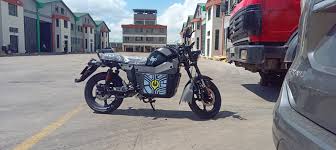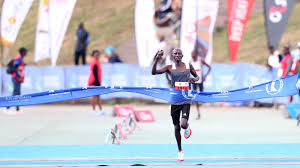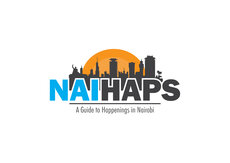Passengers will pay a flat rate fee of Sh150 to use the bus rapid transport (BRT) to be launched in June along Thika road to decongest the city.
The Nairobi Metropolitan Area Transport Authority (Namata) acting director-general Francis Gitau said the money will be levied on passengers using the Kasarani-Kenyatta National Hospital line set to be launched in the next four months on a pilot basis.
The 27 – Kilometer Kasarani-Kenyatta National Hospital line that’s expected to be operational by June is part of the second corridor that runs from Kenol to Rongai.
Other motorways also identified in the project include Ngong Road — Juja, Mama Lucy — T-Mall and Balozi to Imara roads.
“The fares will be charging is Sh150 along the Kasarani-Kenyatta National Hospital line that we hope to start operating come June on a pilot basis,” said Mr Gitau yesterday. Currently, to travel from Kasarani to Kenyatta National Hospital, passengers must use two buses and it will cost about Sh120 for the one way trip.
“In the pilot, the fare will be standard. However, the fare policy for the system will be in zones which are distance-based.”
Passengers using the BRT system along various corridors within Nairobi Metropolitan Area will use a special toll payment card to access the route.
Passengers will be given a card loaded with points that they can tap at termini’s situated along each corridor before they can take a ride.
BRT corridors are expected to hold up to 100 high-capacity buses which will increase to 300 in subsequent orders.
“BRT will be cashless. There will be a card that will also integrate commuter rail payment. Methods of topping up include normal MPesa playbill or you simply go to a designated vendor,” Housing and Urban Development Principal Secretary Charles Hinga said on Wednesday.
The Bus Rapid Transport (BRT) system is generally designed to improve a city’s public transport network relative to conventional buses.
In Kenya, the government is set to launch six BRT corridors in Nairobi.
Priority corridors are the Jomo Kenyatta International Airport (JKIA) to Likoni, James Gichuru-Rironi and Bomas to Ruiru roads.
The buses will be deployed on Nairobi’s Sh65 billion first double-decker road linking Jomo Kenyatta International Airport (JKIA) to the Nairobi-Nakuru highway.
The buses will be deployed on the already-marked Thika Super Highway and other major roads within the city.
At their optimum capacity, the corridors are expected to hold up to 950 high capacity buses reducing travel time and cost by up to 70 percent.
Petrol and diesel-powered buses have been locked out of the lucrative BRT project as part of government efforts to reduce greenhouse gas emissions.
Only electric and some hybrid vehicles, which use a mixture of electric and fossil fuel and those that use biofuels like hydrogen and biogas, will be deployed on the dedicated lane for large-capacity buses to ease traffic congestion.
Fossil fuel-powered cars, buses and matatus emit a big share of the carbon dioxide in Nairobi daily, according to local environmental experts.

























































